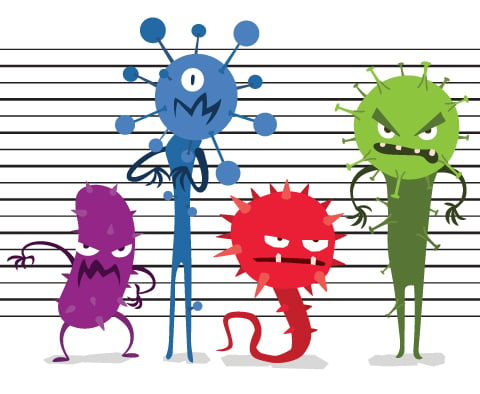Onychomycosis (Nail Infection)
Onychomycosis is a nail infection primarily caused by a fungus that mostly affects toenails, but can also affect fingernails. It can cause your nails to become thick, discolored, and more likely to crack and break. Onychomycosis can also be caused by a bacterial infection, or a combination of both fungus and bacteria. Studies have shown that bacteria alone are involved in as many as 34% of toenail infections, and bacteria and fungi combined are involved in as many as 49% of these infections.
About 10% of people have a nail infection (also called a mycotic nail) at some point in their lives, but this infection becomes more common with age. About 20% of people over age 60 and 50% of people over age 70 get mycotic nails.
You may be more likely to get this type of infection if you have diabetes, athlete’s foot, a weakened immune system, or a nail injury.
Nail infections are contagious. You can get a nail infection if you walk barefoot in areas like locker rooms or public showers, or if you get a pedicure in a nail salon.
Nail Infection Symptoms
Infected nails commonly are:
- Thickened
- Discolored – yellowish, brownish, whitish or blackish
- Separating from the nail bed
- Brittle or crumbly
- Distorted in shape
MicroGenDX Test Used in Diagnosing Nail Infections
An evaluation and culture (growing microbes from your sample in a lab) are often used to diagnose the fungus or bacteria that is infecting your nail. However, standard cultures may not be able to reliably detect the specific microbe causing your infection. Rather than relying on culture, a MicroGenDX test for nail infection detects the DNA of all microbes in your sample, along with how much of each is present, and uses that information to identify the cause of your infection and the drugs that can best treat it.
For bacterial infections, it is important to know that not all antibiotics work for all bacteria, and some even work differently in different areas of the body. Your doctor should consult the "antimicrobials for consideration" chart on your MicroGenDX report to decide what antibiotic is right for you.
For fungal nail infections, such treatments may involve both oral and topical therapies specific to the species of fungi (dermatophytes, yeasts, or molds) detected. For nail infections that involve bacteria, antibiotics may be prescribed specific to the bacterial species detected.
You can order that “NailKEY” test and get complete instructions here:
https://microgendx.com/product/nail-test-service-dm-intl/
Providing a Sample for the Nail Infection Test
You will need to provide a sample of the infected nail for this test. It’s very important to obtain a proper sample by following the instructions for collecting the sample, as well as for packaging and shipping it.
Everything you need to know about taking a sample is included in with your test, and is also available online on the product page. The instructions contain illustrations that will help you collect a sample without contaminating it. For example, you will need to wipe your infected nail with alcohol before taking a sample, either with a nail clipper or by scraping the nail bed with a scalpel to collect shavings.
Medical Specialties That Treat Nail Infections
Nail infections can be treated by a primary care physician, a podiatrist, or a dermatologist.
How Nail Infections are Treated
Nail infections are difficult to cure, and typically don’t go away without treatment. The most effective treatments for fungus are prescription antifungal pill taken by mouth. Topical treatments such as antifungal sprays and creams rarely help, unless they are used in combination with pills. For bacterial infections, an antibiotic pill may be prescribed. In both cases, it is important to carefully follow the prescription instructions and use the complete supply of antifungals and/or antibiotics, even if your symptoms begin to clear up before you are treated.
It can take several months for a nail infection to clear up; however, it’s not unusual for the infection to come back again even after treatment.
In severe cases, when the infection can’t be treated with medication, your doctor may recommend surgery to remove the nail.
References
- Joyce A, Gupta AK, Koenig L, Wolcott R, Carviel J. Fungal Diversity and Onychomycosis: An Analysis of 8,816 Toenail Samples Using Quantitative PCR and Next-Generation Sequencing. J Am Podiatr Med Assoc. 2019;109(1):57-63. doi:10.7547/17-070
- https://www.merckmanuals.com/home/skin-disorders/nail-disorders/onychomycosis
- https://www.cdc.gov/fungal/nail-infections.html
- https://my.clevelandclinic.org/health/diseases/21712-mycotic-nails#symptoms-and-causes
- https://www.mayoclinic.org/diseases-conditions/nail-fungus/symptoms-causes/syc-20353294
- Joyce A, Gupta AK, Koenig L, Wolcott R, Carviel J. Fungal Diversity and Onychomycosis: An Analysis of 8,816 Toenail Samples Using Quantitative PCR and Next-Generation Sequencing. J Am Podiatr Med Assoc. 2019;109(1):57-63. doi:10.7547/17-070

